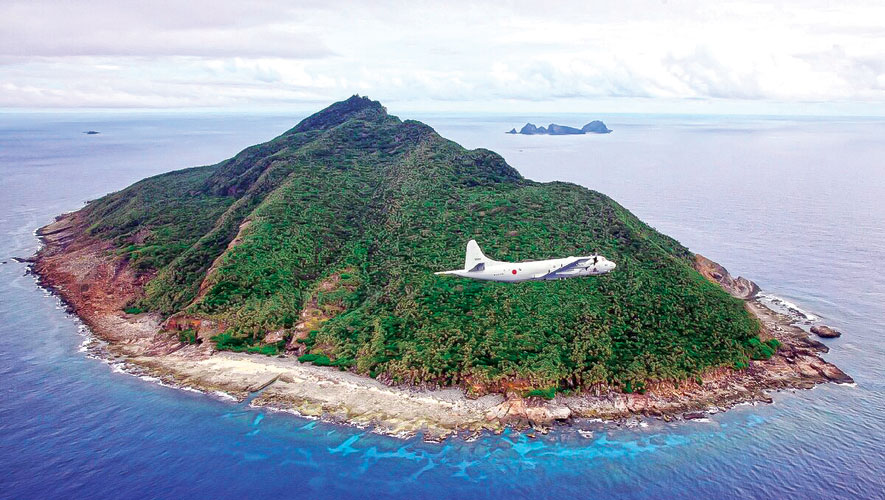As structural contradictions between China and the United States become more apparent, China continues to feel the international pressures from the United States and its allies.
For the latest Cambodian Business news, visit Khmer Times Business
Under such a context, China urgently needs to improve its relations with other major powers to ease its international pressure. Among them, its relations with Japan and Germany are crucial.
The “1+3” pattern previously proposed by Anbound can be seen as the application of this view at the level of economic cooperation. Considering that there is no direct geographical conflict of interest between China and Germany, it is relatively more important to improve and develop the relations between China and Japan.
No contradiction
There is actually no structural contradiction in the China-Japan relations.
From an economic point of view, there is an absence of direct economic structural conflict between the two countries.
Instead, we see room for cooperation for both, in addition to the fact that the two countries are supporters of globalisation.
Seen from the security perspective, the US-Japan Security Treaty was born in response to potential threats from the Soviet Union, China and North Korea.
Yet, with the end of the Cold War and China’s reform and opening-up, China does not pose a direct security challenge to Japan.
China has no intention to control Japan, unless there is a full-scale conflict between China and the United States or Japan’s active involvement in Taiwan. As for Japan, it attempts to be a major power rather than pursuing hegemony. Unlike the US policy of pursuing a unipolar pattern, Japan is actually a supporter of a multipolar world.
Micro-level problems
However, there are still problems to be resolved at a more micro level within China-Japan relations. On one hand, the unresolved historical issues of both sides may lead to the deterioration of relations between the two countries. On the other hand, the issue of the Diaoyu Islands as they are known in China, and the Senkaku as Japan calls them, is more likely to have a huge impact in the short term and even reverse the current good relations between the two powers.
They are uninhabited islands in the East China Sea northeast of Taiwan.
This is not merely a historical issue. Rather it could well be a ground zero both the two East Asian countries.
Should there be some kind of accidental friction on the Diaoyu/Senkaku Islands, this could be used by certain parties to worsen the matter to an uncontrollable stage. This might even affect the overall situation of China-Japan relations and China’s overall surrounding environment.
Therefore, from the current situation, solving the Diaoyu/Senkaku Islands issue as soon as possible has extremely important significance for the continued development of China-Japan relations and the stability of the surrounding environment.
Waves of populism
Geopolitical analytically speaking, because of the “sovereignty dispute”, the Diaoyu/Senkaku Islands issue may not be completely resolved within a short period of time.
Under the current waves of populism and nationalism, governments of the two countries need to carefully consider public opinion when dealing with the “sovereignty issue”, while bearing in mind that the policy space is extremely limited.
However, from the perspective of geopolitical design, the peace of the Diaoyu/Senkaku Islands can still be established through a common management mechanism of “supra-sovereignty”.
Joint development
The peaceful plan of “supra-sovereignty” is actually an expanded form of the principle that puts disputes aside and focuses on joint development.
This plan is essentially a subversion of the contemporary international relations paradigm dominated by sovereign states.
Viewing this from the angle of the construction of geopolitical solutions, it should mainly include the following three basic principles.
First, the territorial disputes of the Diaoyu/Senkaku Islands must be put on hold.
China and Japan can establish a bilateral jurisdictional mechanism applicable to the Islands region through statutory agreements and treaties on the basis of their respective territorial claims. From a macro perspective, such “supra-sovereignty” peaceful mechanism requires the two countries to recognise the existence of sovereignty disputes in the region in their diplomacy, where it is necessary for both sides to make small concessions from the current position for the relevant mechanism to exist.
Historically, the European Coal and Steel Community can be seen as the first attempt similar to the “supra-sovereignty” mechanism, with France and Germany having completely resolved the security dilemma that plagued the two countries for hundreds of years.
Management methods
Secondly, the “supra-sovereignty” agreement cannot be limited to the principled consensus between the heads of state. Instead, it needs to be institutionalised, embodied and legalised.
The agreement should clearly plan the management methods within the Diaoyu/Senkaku Islands area.
The contents involved should include crisis management, defence communication, joint development, dispute arbitration, personnel management and many other factors.
In fact, China and Japan have been trying to establish similar bilateral mechanisms in the past, for instance the China-Japan maritime and air liaison mechanism.
However, in the past, the liaison mechanism was essentially a deliberative body set up by the two sides on specific issues and it was the product of a typical pressure-based policy.
Strategic consensus
The core of the “supra-sovereign” peace agreement is the materialisation of the strategic consensus between the two sides, which embodies the strategic intentions of the both parties. Among them, the fundamental principle is the demilitarisation and the peace of the Diaoyu/Senkaku Islands.
Specifically, in addition to maritime rescue, the Japanese side should withdraw and reduce the self-defence force deployed in the region and China will end the current large-scale cruise strategy accordingly.
In addition, it is far from enough to have a safe haven mechanism. It is also necessary to establish a new type of jurisdiction on the basis of joint consultation and to manage all activities in the designated area.
Legislative process
At this point, the success story of the European Coal and Steel Community can also provide the two countries with some reference.
Thirdly, the “supra-sovereignty” mechanism requires a series of legal documents to endorse it. The best scenario is that the agreement passes through the legislative process and becomes a formal legal document, not just a policy initiative of a certain government.
This means that similar agreements require both parties to make some degree of concessions, so that the agreement can pass the domestic procedures of both parties.
The nature of such agreements will then be moderate but, just as the EU originated from the European Coal and Steel Community, after legal procedures, similar solidification and development of the mechanism will continue to promote the development of bilateral relations through the spillover effect and even integrating the future China-Japan-Korea Free Trade Zone to promote the co-development of Northeast Asia.
Need for political affirmation
This agreement is of course only a geographical conception about regional peace. For it to be truly realised, it is necessary to obtain political affirmation and great diplomatic efforts from both China and Japan.
Considering the current revival of populism and nationalism in the world, the road to “supra-sovereignty” proposed in this paper will face certain challenges within the two countries.
However, in principle, this agreement has reserved a certain amount of operational space for Japan’s Shinzo Abe administration.
After all, the Japanese constitution’s peace clause has great influence and legal status. Therefore, the goal of peace of the Diaoyu/Senkaku Islands is not an impossible task. While China temporarily admits the territorial disputes of the Diaoyu/Senkaku Islands, the peace process of the Diaoyu/Senkaku Islands will make the issue no longer a risk point that may break out at any time, thereby eliminating the continued obstacles in the relations of the two countries.
In the context of the continuous decline of US-China relations, this is undoubtedly necessary.
At the same time, it should be noted that such a solution to the peaceful settlement of the disputed territory is actually an epoch-making peace agreement. In the context of the era of continuous regression of the EU integration process, if the process of the progression from the Coal and Steel Community to the European Community can be reproduced in China and Japan, this will undoubtedly prove the idea that “when a country becomes a great power, it will exert hegemony” wrongly. The success story of Germany and France in thoroughly solving the security dilemma through similar mechanisms also means that the “supra-sovereign” Diaoyu/Senkaku Islands peace plan may fundamentally change the geopolitical pattern of Northeast Asia.
Final analysis conclusion:
On the whole, the “supra-sovereignty” peaceful mechanism of the Diaoyu/Senkaku Islands is not impossible.
It is necessary for the Chinese side to try establishing this mechanism. The rest is the issue of time and diplomatic efforts.
Chen Gong founded Anbound Think Tank in 1993. He is now Anbound chief researcher. Chen Gong is one of China’s renowned experts in information analysis. Most of his outstanding academic research activities are in economic information analysis, particularly in the area of public policy




